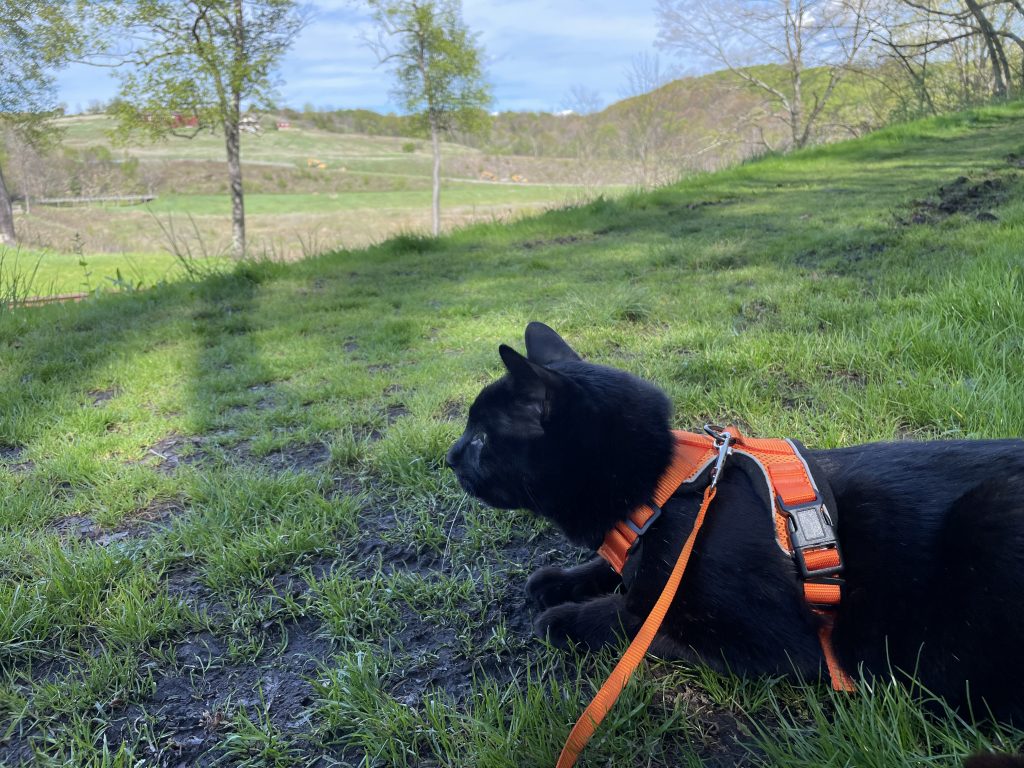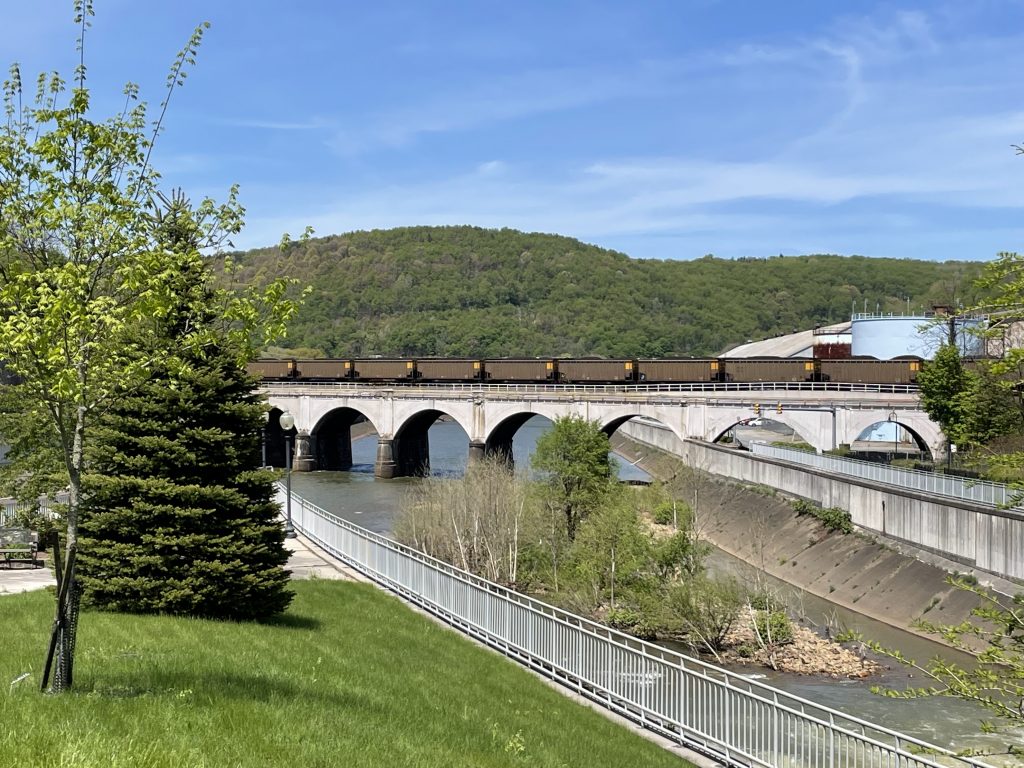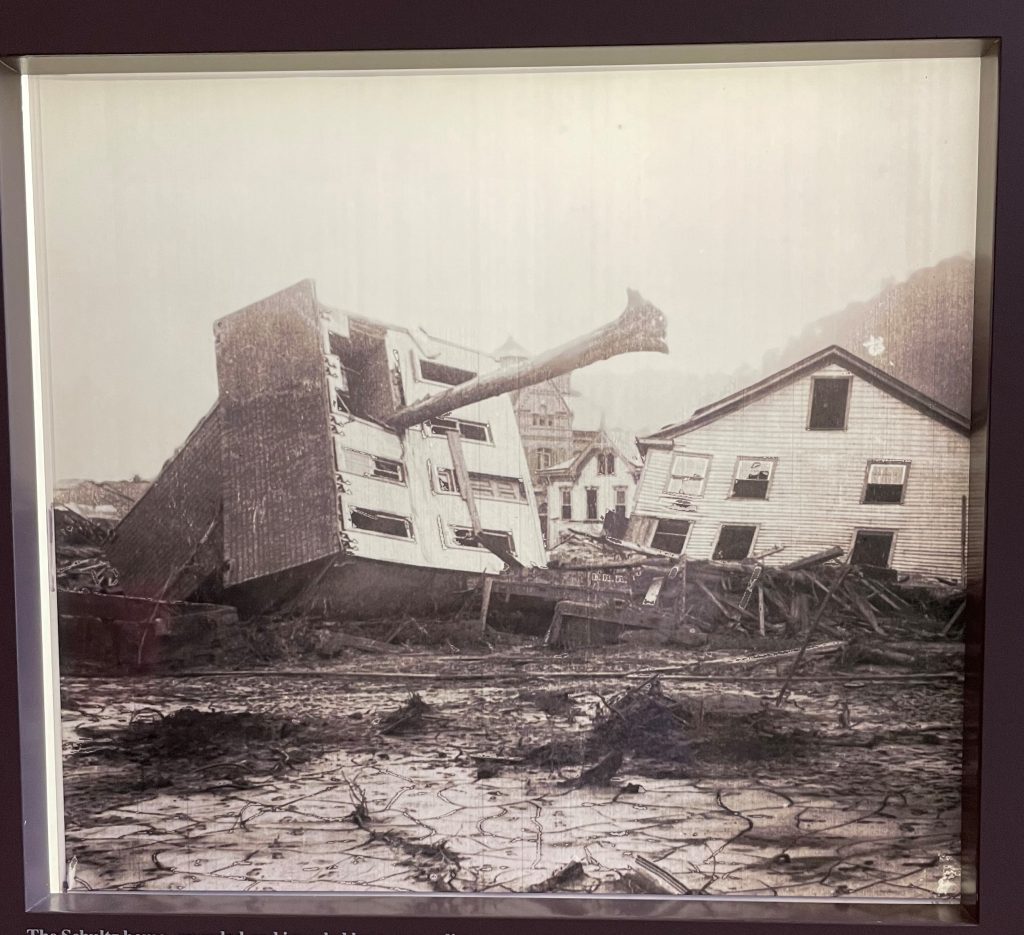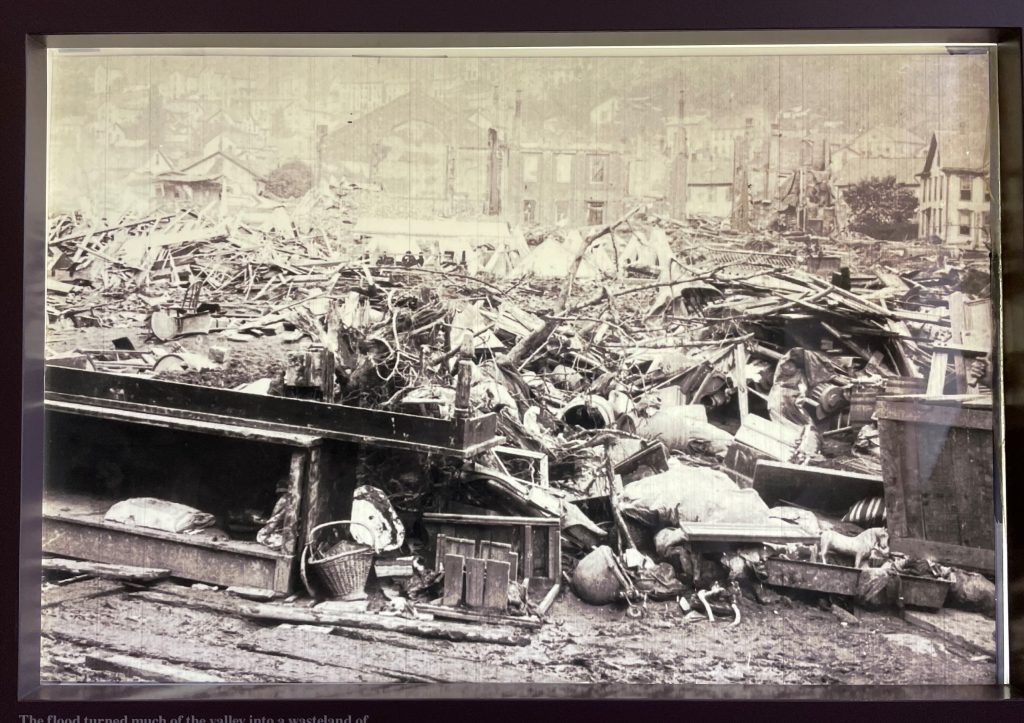The problems all started 14 miles upstream from Johnstown, Penn., at the South Fork Dam in South Fork. The dam created a man-made, two-mile-long by one-mile-wide lake at a private resort that served the steel, coal and railroad industrialists of Pittsburgh, and their families. There had been warnings that the dam was not stable, but only cursory attempts at shoring it up were ever made. In fact, the South Fork Hunting and Fishing Club, as they called themselves, actually reduced the height of the dam so their carriages could be driven over it, leaving the top of the dam only 12 feet above the top of the lake.
May of 1889 ended with days and days of unusually heavy rain, with several inches of rain falling in a 24-hour period. By the morning of May 31st, the lake was rising about a foot an hour. Workers who had been hired for another project at the Club were enlisted in a frantic effort to shore up the dam, but just before 3 pm, the dam ruptured. Nearly 15 million cubic meters of water were released. Modern day estimates say it took about an hour for the lake to empty once the dam failed.
As the water rushed downstream, it wiped out bridges, smaller settlements, and railroad tracks. As it raged, the water picked up rocks, trees, train cars, building materials and other debris, turning the wall of water even deadlier. Telegraph lines were taken out, making it impossible to send enough serious warnings downstream that might have encouraged people to seek higher ground. What messages did arrive were disregarded; there had been many false alarms before, and people no longer heeded the warnings.
When the debris-filled water reached the Conemaugh Viaduct, a 78-foot high railroad bridge, its progress was stopped, but only temporarily. After just several minutes, this bridge collapsed, and even greater mass of water and detritus was released downstream all at once. Estimates are that the flow rate at this point was 420,000 cubic feet per second.
Mineral Point, a small settlement of about 30 families, was the first to be caught in the flood’s path. In moments, the entire town–buildings, topsoil, and subsoil–were wiped out. 16 people perished here, and when the town’s survivors returned they found nothing but bedrock.
The town of Woodvale was hit next, with 314 of its 1,000 residents dying in the raging waters. One of the town’s largest businesses, the Gautier Wire Works, was demolished when its boilers exploded as the flood waters made contact. The explosion added miles and miles of barbed wire to the debris stream, which was to have horrifying consequences later downstream.
One hour after the dam burst, the torrent attained a speed of 40 miles per hour and a height of 60 feet. This is when it reached Johnstown, a city of 30,000 people, but as the valley narrowed and the river’s natural path turned, the flood waters had no place to go and the lower part of the city was devastated.
Just after the bend in the river, flood waters reached the Stone Bridge, a substantial railroad bridge that refused to yield to the pressures of the moving body of water. But this meant that debris began to back up at the bridge, with subsequent flood waters adding more and more trees, furniture, building materials to the pile. Horrifyingly, the miles of barbed wire added to the flood upstream now entangled all within its grasp–including people who were swept away in the waters and now found it impossible to escape.
The scene of carnage at the Stone Bridge was to worsen still further.
Oil and kerosene tanks had also been knocked loose and ripped open by the flood waters, and the surface of the water was covered in a flammable film–and it burst into flames. The fire burnt so hot that the flames continued for three days. Any chance of rescue for anyone still alive in the debris was now gone.
When the flood water receded, more than 30 acres of debris needed to be removed from beside and below the bridge, using dynamite because it was so tightly compressed. More than 2,200 people were dead and missing from Johnstown, with one-third of bodies never identified. It was the largest loss of life in the U.S. at the time; 99 entire families were lost and four square miles of town were completely destroyed. All this destruction took just ten minutes.
Today you can visit the site of the dam at the Johnstown Flood National Memorial. You can watch a terribly melodramatic film (actually, I cannot believe the National Park Service is showing it), tour the exhibits, and then walk through the area where the dam and lake had been.
You can also visit the Johnstown Flood Museum, which is located right along the river in an area that had been wiped clean of buildings during the flood. Here you can review the exhibits and watch another film on the disaster (we thought this film was rather on the mediocre side, but that was only until we saw the film at the Johnstown Flood National Memorial later). Not far away, the Stone Bridge, where all the debris backed up and so many lives were lost, still stands. It has been resurfaced but remains structurally sound.
Finally, we visited the Grandview Cemetery, where 777 unidentified bodies are buried (pictured above).
While driving around, Doug and I listened to an audiobook of History of the Johnstown Flood by Willis Fletcher Johnson. This book was published not long after the flood, and contains many first-hand accounts; it’s definitely “of the period”, though, and was a bit rough around the edges. David McCullough’s Johnstown Flood would probably be a better choice, if you’re interested in reading about it.










One thought on “The Johnstown Flood”